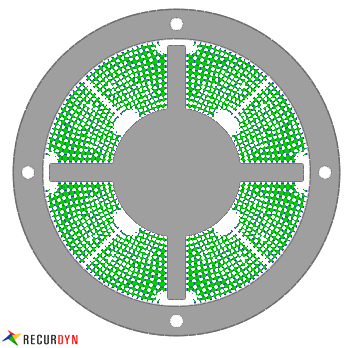9. FFlex

Figure 9.1 FFlex example
In many multibody dynamics models, it is important to include one or more flexible bodies in order to obtain accurate results. Since the mid-1980s the most popular approach for adding flexible bodies is using a modal definition. The advantage of the modal method is that a complex meshed finite element can be reduced to a series of modes that could be efficiently used in multibody dynamics software. However, the modal flexible body has several restrictions that make it difficult to find a correct solution.
It is difficult to:
Model contact with the modal flexible body accurately because the contact represents a virtual “attachment point” and the associated static correction modes needed for accuracy are not available.
Keep the modal flexible body definition currently because of the necessity of using external FEA to:
Change the mesh
Rerun the modal analysis
Redo the import process
These restrictions have been addressed with a new method for working with flexible bodies, RecurDyn/FFlex. You can define a flexible body by reading a FE mesh using industry-standard file formats. The FFlex body includes the element details and has the following benefits. It accurately represents a local deformation due to contact force. It only requires a mesh update as design changes occur. It represents accumulated nonlinear deformations in a flexible body while linear behavior is maintained in each element. This could also be done by defining a series of modal flexible bodies, but that would be too tedious to be practical.
Above all, the FFlex body is easy to use and comfortable to understand. RecurDyn/FFlex should be used in a model with flexible bodies in contact or where it would be helpful to assess the nonlinear deformation.
- 9.1. Finite Elements
- 9.2. Modeling Step
- 9.3. Import FFlex Body
- 9.4. Merge FFlex Body
- 9.5. Split FFlex Body
- 9.6. Node Constraint
- 9.7. Edit Functions for FFlex body
- 9.8. Flex Loads
- 9.9. Contacts in FFlex
- 9.10. Post Process in FFlex
- 9.11. Output Regenerator
- 9.12. Export Mesh Data
- 9.13. Durability Interface
- 9.14. Structural analysis with Heat Transfer